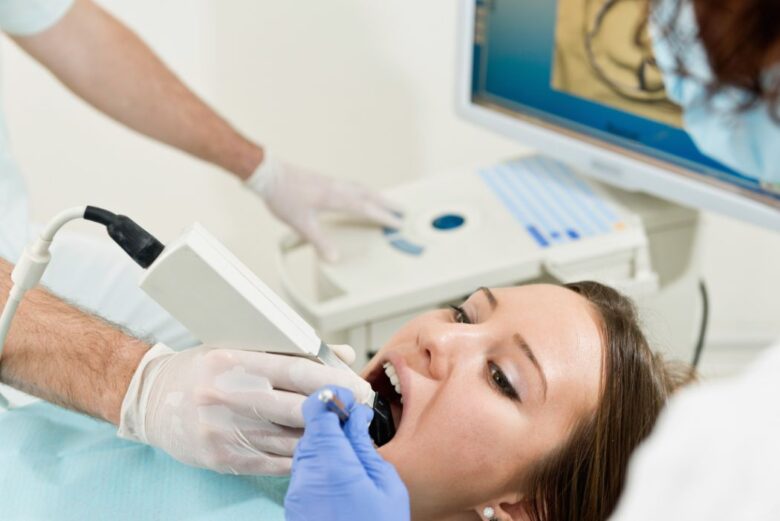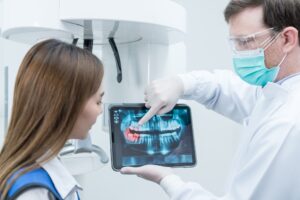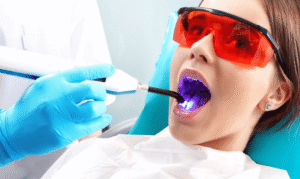Recently, technology has revolutionized dentistry, especially preventive care. New dental technologies improve the quality of treatment and help prevent dental diseases. Modern technology allows dentists to detect problems earlier, monitor oral health, and provide patients with the tools they need to care for their teeth. This improves oral health and reduces gum disease, tooth decay, and tooth loss. Prevention rather than treatment is changing dentistry and patients’ oral health.
Early Detection and Digital Diagnostics
Technology has improved preventive dental care, especially in the area of diagnosis. Dentists can use digital X-rays, CBCT, and intraoral cameras to detect dental abnormalities earlier. These technologies can take high-resolution images of teeth, gums, and jawbone so that cavities, cracks, and gum disease can be detected at a microscopic level. Your dentist may recommend fluoride or sealants to detect dental problems early and prevent them from getting worse. The ability to diagnose a problem before it occurs is critical to minimizing invasive procedures and improving long-term oral health.
Harnessing Wearable Technology for Better Monitoring
Technology is helping people monitor their oral health at home, improving preventive care. Wearable devices that record toothbrushing and provide real-time feedback are popular. Sensors in smart toothbrushes can measure brushing technique, pressure, and brushing time. These toothbrushes can be paired with a mobile app to provide oral health data and advice. These devices provide instant feedback, helping people brush their teeth properly and reducing the risk of tooth decay and gum disease. Wearable technology is helping people manage their oral health and prevent problems.
Applying Artificial Intelligence to Risk Assessment
AI is also helping with preventive dentistry. AI systems can analyze dental images and medical histories to predict oral health problems. Artificial intelligence can help dentists identify patients at risk for tooth decay and gum disease by analyzing trends and risk factors. This allows preventive care strategies to be tailored to the specific patient. AI software can also detect subtle changes in a patient’s dental health over time, which can help detect disease symptoms early. Using artificial intelligence, dentists can more accurately identify risks, allowing them to intervene early and prevent serious dental diseases.
Teledentistry and Preventive Care
Another technology that is changing preventive dentistry is teledentistry. Teledentistry allows patients to receive dental care at home through virtual consultations and remote monitoring. This is especially useful for people in rural or underserved areas who do not have easy access to dental offices. Using videos, photos, and intraoral cameras, patients can see the situation from a second perspective, ask questions, and receive expert advice on caring for their teeth and gums. Teledental systems allow people to track their oral health and receive personalized recommendations. This accessibility allows more people to get advice about their teeth without having to visit the dentist as often.
Laser Dentistry for Early Gum Disease
Laser technology has changed the way dentists treat and prevent gum disease, a serious oral health problem. Laser dentistry is less invasive, more precise, and faster than traditional methods. Lasers can remove infected gum tissue, speeding healing and reducing the need for stitches. Lasers can also treat gum disease early by targeting bacteria and unhealthy tissue, preventing the condition from getting worse. Early laser treatment of your teeth can prevent expensive deep cleanings, gum surgery, and tooth extractions. This preventive approach to gum care helps keep your patient’s gums healthy.
Development of Prevention Tools
Dental sealants and fluoride treatments have been effective for years, but technology continues to improve. Advanced imaging technology allows for precise application of dental sealants (thin layers applied to the chewing surfaces of back teeth) for a better fit and longer-lasting results. In addition, fluoride treatments have been improved to prevent cavities and tooth decay. Newer fluoride varnishes and gels are easier to apply and last longer, especially for children and at-risk patients. Accurate application of preventive treatments can lead to better results and fewer oral problems over time.
Digital Patient Education Tools
Technology also helps patients better understand preventive care. Many dental practices educate consumers about oral hygiene, the dangers of poor dental care, and the benefits of preventive care through videos, digital brochures, and apps. These resources help patients understand the importance of brushing, flossing, and professional cleanings to their oral health. Dental practices also use digital records and visual images to educate patients about oral health and encourage healthier behaviors.
The Future of Preventive Dental Care
Technology offers a bright future for preventive dental care. Artificial intelligence, machine learning, and better diagnostic tools are helping dentists diagnose, treat, and prevent oral health problems before they become serious. New technologies in both clinical and home care are putting people in control of their own dental health. With advances in preventive dental care, we can expect better outcomes, less invasive procedures, and a more proactive approach to healthy smiles.
Conclusion
Technology is changing preventive dental care. From digital diagnostics and AI-based risk assessments to advanced oral hygiene products and teledentistry, these developments are changing the way dentists and patients approach oral health. Prevention, rather than treatment, can reduce dental problems and improve patients’ quality of life. As these technologies continue to advance, maintaining oral health and preventive measures will become easier and more accessible.
FAQs
1. How has technology improved preventive dental care?
Technology has improved dental diagnosis, home care, and preventive treatments like sealants and fluoride. Artificial intelligence and teledentistry technologies are improving the personalization of care.
2. What are some emerging technologies for at-home oral hygiene?
Electric toothbrushes, water flossers, and smart flossers with timers, pressure sensors, and real-time feedback can help patients maintain better oral hygiene.
3. How can teledentistry help with prevention?
Teledentistry makes it easier for patients to maintain good oral health at home by consulting a dentist, tracking their oral hygiene habits, and receiving recommendations for preventive care.
4. Is laser dentistry used for preventive care?
Laser treatments can help treat early-stage gum disease and remove bacteria from infected gum tissue. The procedure prevents periodontal disease and reduces the need for invasive treatments.
5. What role does artificial intelligence play in dental prevention?
AI patient analytics data measures dental risks, enabling dentists to develop more personalized care plans and detect abnormalities early.




